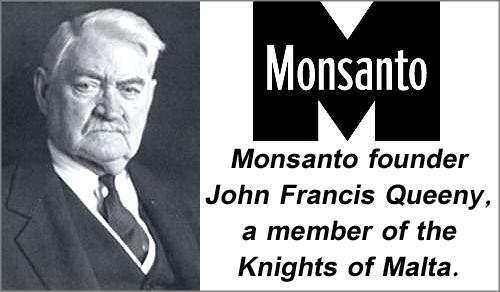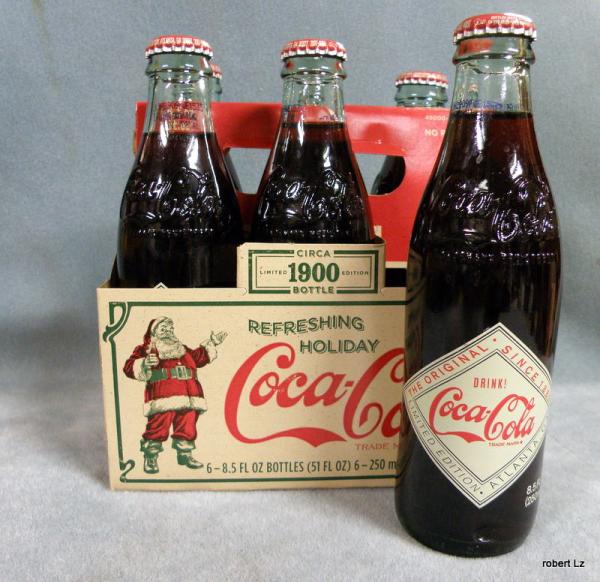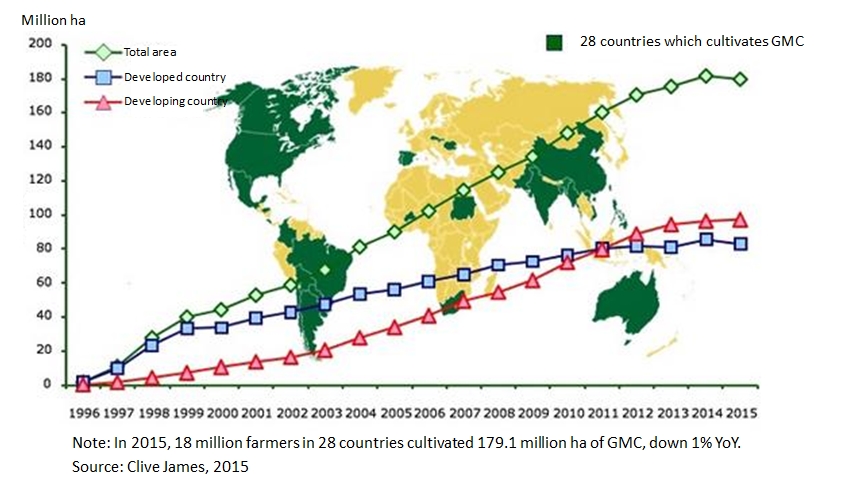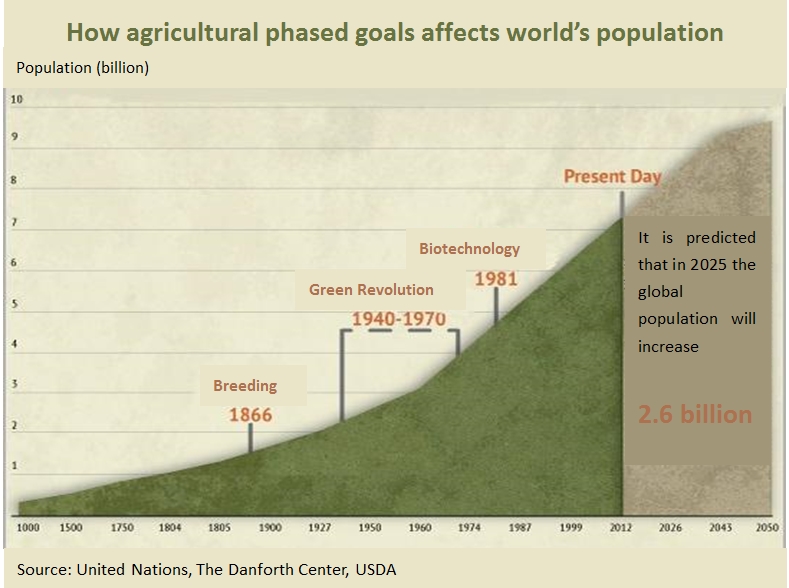John Francis Queeny would never expect that
Monsanto could become such a genetically modified giant with the market value
of USD50 billion when he founded Monsanto in the last century. What’s more
unexpected to John Francis Queeny is that the company named after his wife’s family
name-Monsanto, received so much revilement from the public in the future.

Monsanto’s founder: John Francis Queeny
There were few companies like Monsanto,
towards which the public had extremely different attitudes. Both reviling and
admiring were full of its long way development. On the bright side, the agrochemical
products from Monsanto can greatly improve the output of crops and kill pests.
However, Monsanto always got involved in significant environmental events, such
as when the American forces applied “Agent Orange” in Vietnam War, which caused
birth defects; and when the rice bran oil poisoning incident happened in Japan.
In the past twenty years, Monsanto was even
facing demonizing from the public when it is expanding its business of genetically
modified crops (GMC).
On the contrary, Monsanto also has quite a
lot of admirers. They believe that Monsanto’s innovation on seeds was good news
for human beings to deal with food crisis.
In 2013, the Oscars in agriculture - Prize
for World Food Safety awarded the senior officials in Monsanto and two
industry-related scientists for their efforts in promoting GMC.
Though the controversies keep on and on,
Monsanto has been coveted by quite a few giants, thanks to its patents and
potential development in the agricultural field.
Recently, Bayer intended to acquire
Monsanto with USD62 billion; however, Monsanto refused Bayer and claimed that
the offer was too low.
So, what is inside Monsanto? Does it really
worth USD62 billion?
From saccharine supplier for Coca-Cola
to chemical and agrochemical giant
In 1901, John Francis Queeny founded
Monsanto in St. Louis, Missouri and named it after his wife’s family name. In the
first three years, saccharine, the major product from Queeny’s father in law, Emmanuel
Monsanto’s company, became the only product in Monsanto.

Bottles of Coca-Cola in the early twentieth
century
With the rise of Coca-Cola, Monsanto earned
its “first bucket of gold” for providing saccharine for Coca-Cola. Later, the
products from Monsanto expanded to caffeine
and vanilla additives from saccharine.
In 1928, John Francis Queeny’s son Edgar
Queeny inherited Monsanto and Monsanto began to develop towards the chemical
field. In the second half of the twentieth century, Monsanto become a giant in producing
chemical products like chemical fertilizers and plastics. And the notorious
chemical and biological weapon “Agent Orange” was produced in the period.

Vietnam War, American forces spraying “Agent
Orange”
Monsanto together with other companies
produced “Agent Orange” for the American forces in Vietnam War. During the war,
the American forces applied this kind of defoliant to fight against the Vietnamese
soldiers and it had polluted most of the forests in Vietnam. Due to the high
toxicity and stability of 2, 4, 5-trichlorophenoxyacetic acid in “Agent Orange”, a great deal of
soldiers and Vietnamese people are still suffering from the sequel of the application of “Agent
Orange” till now.
During the time Monsanto was handled by
Edgar Queeny, the high toxic products produced by Monsanto like DDT, BGH (Bovine
growth hormone) and PCBs were all controversy. In the meanwhile, Monsanto’s key
product “Roundup” was produced. Currently, the “Roundup” products have been
popular for over 30 years and became the herbicide which captures the most
market share in the globe.
It was another turning period for Monsanto
from 1996 to 2000. In 1996, Monsanto first GMC entered the market. In 2000, Monsanto
merged with Pharmacia & Upjohn Inc., a pharmaceutical producer. Two years
later, the group’s agricultural activities were spun off into a new Monsanto.
Till that time, Monsanto turned into an agricultural biological breeding company
from pharmaceutical and chemical enterprises.
Since 1996, Monsanto has had around 20
times of acquisitions and most of them were about seed companies. The GM seeds
owned by Monsanto have expanded to corn, cotton, wheat from soybean. Since
2005, Monsanto even spent over USD2 billion buying two vegetable-seed companies,
including Seminis, the world’s largest vegetable supplier.
In fact, it is exactly the GM that made
Monsanto more resented. Together with the previous high toxic products,
Monsanto was beyond notorious in the public.
The Harris Poll about Corporate Reputation
Quotient in 2014 showed that Monsanto was listed in the third from the bottom
after Halliburton, with the score just a little bit higher that British
Petroleum (BP) which spilled petrol in the Mexican Gulf and Bank of America.
Since 2013, every year around May 20, the “Anti-Monsanto
Parade” was held in over 400 cities in over 40 countries, from America, Africa
to Europe. Thousands of people were on the street to protest against Monsanto’s
GMO, herbicides and other chemical products.
Debate on GM
The commercialization of GM has become one
of the biggest trends in the world’s agriculture development, though part of
the public was protesting GMO.
U.S. Department of Agriculture stated in
2013 that 90% of corn and cotton and 93% of soybean were genetically modified
in US in 2013.
In April 2016, International Service for
the Acquisition of Agri-biotech Applications (ISAAA) stated that it had been 20
years for the commercialization of GM since 1996. During these 20 years, the
cultivation land used for GMC in the world reached to 2 billion ha and the
total income for the farmers was over USD150 billion. Currently, 11 GMCs were
cultivated in 28 countries.

Although debates on GM go on and on, there are
no controversies on whether GM is harmful for people’s health. US National Academy
of Sciences, American Medical
Association, World Health Organization, Royal Society, European
Commission, American Association for the Advancement of Science and other
institutes all once conducted literature survey on GM and found no evidence to
prove that there were safety problems about the GM foods in the market.
For public outreach, different authorities
keep publishing reports on GM food safety. According to the brochure published
by Royal Society recently, GMC would not do harm to the environment and GMC is
safe for people to eat.
To tackle food crisis, agriculture would
cooperate more and more with biology and chemistry to improve the output of
crops in the future.

Currently, Monsanto’s innovations fall into
two categories. The first is breeding; the second is genetic modification.
Monsanto has 30 R&D centers and over 250 breeding areas all over the world.
As the first company to promote GMC,
Monsanto captures the most market share – about 80% of the corn and over 90% of
the soybeans in US were cultivated with Monsanto’s seeds. In addition, Monsanto
owns about 1,700 patents. According to its 2015 financial report, Monsanto’s
sales volume was USD15 billion. Among this, the sales volume in its seed and genetic
departments reached around USD10.2 billion.
The value of GM also lies in the control on
weeds and insects. All of the seeds in Monsanto are resistant to Roundup
products. That’s to say, when Roundup products are applied on the field to kill
weeds, the crop itself would not be affected. In addition, recently, Monsanto
are promoting two kinds of GM seeds, which are Genuity SmartStax corn and Genuity
Roundup Ready 2 Yield soybeans. Both of the seeds could help improve yields by 8%
per year while in the past several decades, the yields of soybean only improved
1% annually.
Nowadays, the world is facing the problem
of water shortage. Monsanto plans to promote “drought tolerant” products, which could be cultivated in dry areas.
*This article is sorted, edited and
translated by CCM.
About CCM:
CCM is the
leading market intelligence provider for China’s agriculture, chemicals, food
& ingredients and life science markets. Founded in 2001, CCM offers a range
of data and content solutions, from price and trade data to industry
newsletters and customized market research reports. Our clients include
Monsanto, DuPont, Shell, Bayer, and Syngenta. CCM is a brand of Kcomber Inc.
For more information about CCM, please visit www.cnchemicals.com or get in touch with us directly by emailing econtact@cnchemicals.com or calling +86-20-37616606.